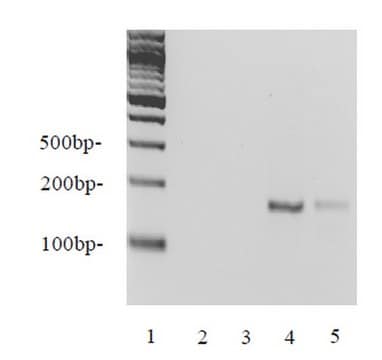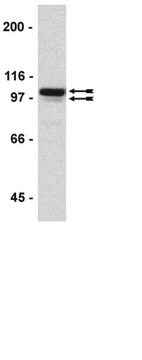17-371
EZ-ChIP
Sinónimos:
Chromatin Immunoprecipitation Kit
About This Item
Productos recomendados
descripción
22 individual chromatin immunoprecipitation (ChIP) reactions using inexpensive protein G agarose beads
Nivel de calidad
envase
kit of 22 assay(s)
técnicas
immunoprecipitation (IP): suitable
Descripción general
Chromatin Immunoprecipitation (ChIP) is a powerful technique for mapping the in vivo distribution of proteins associated with chromosomal DNA. These proteins can be histone subunits and post-translational modifications or other chromatin associated proteins such as transcription factors, chromatin regulators, etc. Additionally, ChIP can be used to identify regions of the genome associated with these proteins, or conversely, to identify proteins associated with a particular region of the genome. ChIP methodology often involves protein-DNA and protein-protein cross-linking, fragmentation of the cross-linked chromatin, and subsequent immunoprecipitation of chromatin with an antibody specific to a target protein. The DNA fragments isolated in complex with the target protein can be identified by a variety of methods including PCR, DNA microarray and DNA sequencing. Standard or quantitative PCR can be performed to verify whether a particular DNA sequence (the gene or region of the genome) is associated with the protein of interest. The combination of ChIP and promoter or genomic tiling microarrays (ChIP-chip) allows genome-wide identification of DNA-binding sites for chromatin-associated proteins with precise resolution. Alternatively, high-throughput sequencing of libraries constructed from immunoprecipitated chromosomal DNA (ChIP-Seq) is a powerful alternative to ChIP-chip in mapping the protein-DNA interactions across mammalian genomes.
Características y beneficios
- Easier: Spin columns make DNA purification easier and more reliable - no more messy phenol-chloroform extractions.
- Quicker: All reagents to process your samples are included - you don′t have to spend valuable time making them.
- Greater Reproducibility: Positive and negative control antibodies and PCR primers are included to help validate your results and to troubleshoot your experiments.
Envase
Componentes
- DNA Purification Spin Columns and Collection Tubes
- ChIP Blocked Protein G Agarose
- Anti-RNA Polymerase II
- Control PCR Primers
- Normal Mouse IgG
- Bind, Wash and Elution Reagents
- Protease Inhibitor Cocktail II
- RNase A
- Proteinase K
- All required buffers
- ChIP Dilution Buffer
- Low Salt Immune Complex Wash Buffer
- High Salt Immune Complex Wash Buffer
- LiCl Immune Complex Wash Buffer
- TE Buffer
- 0.5M EDTA
- 5M NaCl
- SDS Lysis Buffer
- 1M Tris-HCl, pH 6.5
- 10X PBS
- 10X Glycine
- 1M NaHCO3
- Control Primers
- 20% SDS
- Spin Filters
- Collection Tubes
- Bind Reagent A
- Wash Reagent B
- Elution Reagent C
Almacenamiento y estabilidad
Cláusula de descargo de responsabilidad
Palabra de señalización
Danger
Frases de peligro
Consejos de prudencia
Clasificaciones de peligro
Acute Tox. 4 Oral - Aquatic Chronic 3 - Eye Dam. 1 - Flam. Liq. 2 - Resp. Sens. 1 - Skin Irrit. 2
Código de clase de almacenamiento
3 - Flammable liquids
Clase de riesgo para el agua (WGK)
WGK 2
Punto de inflamabilidad (°F)
55.4 °F
Punto de inflamabilidad (°C)
13 °C
Certificados de análisis (COA)
Busque Certificados de análisis (COA) introduciendo el número de lote del producto. Los números de lote se encuentran en la etiqueta del producto después de las palabras «Lot» o «Batch»
¿Ya tiene este producto?
Encuentre la documentación para los productos que ha comprado recientemente en la Biblioteca de documentos.
Nuestro equipo de científicos tiene experiencia en todas las áreas de investigación: Ciencias de la vida, Ciencia de los materiales, Síntesis química, Cromatografía, Analítica y muchas otras.
Póngase en contacto con el Servicio técnico












